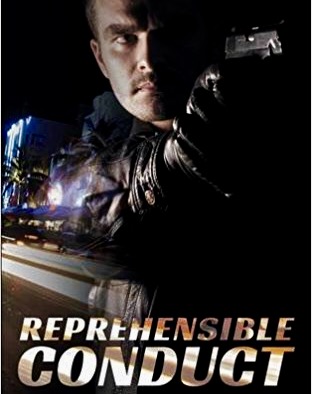A particularly frivolous and vexatious claim commenced by ” God, Prince Kitsilano, Skidegate-Sterritt Family, in James Sterritt and Marya Watson , on behalf of all Indians and Muslims was struck and the litigant barred from commencing further court actions without leave of the Supreme Court.
While the reasons for judgement are entertaining to read, the case is an example of some of the court actions that are commenced where there is no merit whatsoever to the claim which is typically almost unintelligible.
A portion of the judgment is as follows:
Application to Strike the Notice of Civil Claim
[6] Rule 9-5(1) of the Supreme Court Civil Rules, B.C. Reg. 168/2009, provides that “at any stage of a proceeding, the court may order to be struck out or amended the whole or any part of a pleading, petition or other document on the ground that”:
(a) it discloses no reasonable claim or defence, as the case may be,
(b) it is unnecessary, scandalous, frivolous or vexatious,
(c) it may prejudice, embarrass or delay the fair trial or hearing of the proceeding, or
(d) it is otherwise an abuse of the process of the court, and the court may pronounce judgment or order the proceeding to be stayed or dismissed and may order the costs of the application to be paid as special costs.
[7] A claim will only be struck for disclosing no reasonable claim if it is plain and obvious, assuming the facts pleaded are true, that it discloses no reasonable cause of action. That is, is there a question fit to be tried? (British Columbia v. Imperial Tobacco Canada Ltd., 2011 SCC 42, at paragraph 17; Citizens for Foreign Aid Reform Inc. v. Canadian Jewish Congress, [1999] B.C.J. No. 2160 (S.C.)
[8] In this instance the plaintiff purports to make a claim “on behalf of all Indians and Muslims” for a declaration that he has title to the land in B.C. and as well seeks an order that the defendants enter into a tenancy agreement with him as the paramount landlord of the world. Aside from the absurdity of such an assertion, an individual member of a particular indigenous community cannot in any event assert aboriginal title as aboriginal title is communal. As a result it is plain and obvious that the notice of civil claim discloses no reasonable cause of action. (Louison v. Ochapowace Indian Band #71, 2011 SKQB 87, at paragraphs 2 and 9. See, also, Sterritt v. Canada and Sterritt v. Prince Rupert, supra.)
The Notice of Civil Claim is Unnecessary, Frivolous. Embarrassing. Scandalous and an Abuse of the Court’s Process
[9] A pleading is “unnecessary” or “vexatious” if it does not go to establishing the plaintiff’s cause of action or does not advance a claim known in law: Citizens, supra, at paragraph 47.
Application to Strike the Notice of Civil Claim
A pleading is frivolous if it “is without substance, is groundless, fanciful, trifles with the court or wastes time”: Borsato v. Basra, [2000] B.C.J. No. 84 (S.C.), rev’d on other grounds, [2000] B.C.J. No. 2855.
[10] An “embarrassing” and “scandalous” pleading is one that is so irrelevant that it will involve the parties in useless expense and will prejudice the trial of the action by involving them in a dispute apart from the issues: Citizens, supra, at paragraph 47.
[11 ] The abuse of process doctrine allows the courts to dismiss actions in circumstances where the court process is used for improper purposes. Abuse of process is a flexible doctrine unencumbered by specific requirements. It is directed to prevent actions that violate such principles as judicial economy, consistency, finality and the integrity of the administration of justice: Krist v. British Columbia, 2017 BCCA 78, at para. 52.
[12] In determining whether proceedings constitute an abuse of process, the court may consider whether there have been multiple or successive related proceedings that are likely to cause vexation or oppression: Stephen v. British Columbia (Ministry of Children & Family Development), 2008 BCSC 1656, at paragraph 51.
[13] It is an abuse of process for a plaintiff to have multiple actions seeking the same relief against the same defendant: Dixon v. Stork Craft Manufacturing Inc., 2013 BCSC 1117, at paragraph 61.
[14] Making a claim knowing that there is no factual basis for the allegations or for some improper collateral purpose constitutes an abuse of process: Moon v. Sails at the Village on False Creek Developments Corp., 2012 BCSC 1999, at paragraphs 27-28.
Discussion
[15] I reproduce the Statement of Facts and Relief Sought as follows:
Part 1 Statement of Facts
1. World History, the Tzalm al’klt adaawik, is divided by the two Abramic blessings:
a. Ishmaglite – The Singular Great Nation
b. Isaacite – the Many Nations.
Canada is Isaacitic, part of the multi-state capitalist model, conducive to war and enforced by arms.
The Provincial government of British Columbia is invested in the Isaacite Model and
The City of Vancouver and City of Prince Rupert resist plaintiffs’ proposal to convert to the Ishmaelite, great Nation, Caliphate, model.
The manager of M’akola Society, Nicholas Najda, seeks to remove plaintiffs Mary Watson and James Sterritt from 438-8th Avenue West, Prince Rupert for claiming title to the lot of land at that address by threatening to evict Watson, who believes she owns the house by completing rent-to-own in 2007.
The RCMP, mayor and bylaw officer refuse to consult and order James Sterritt to stay out of City Hall, A dog bylaw ticket was issued and demand to license dog issued.
2. Plaintiffs’ Indian title to all land in the Province of British Columbia requires that all occupants of the Province end trespass and join the great nation by agreement to terms of tenancy under God in Prince Kitsilano (Jesus Chris), as in the Tzalm Family of Skidegate-Sterritt, as in James Sterritt, the landlord on behalf of the plaintiffs.
3. Section 604 City of Prince Rupert Bylaw #3250 is authority to set the ticket aside until the City ends trespass against plaintiffs.
4. M’Akola Society cannot evict or claim the lot at 438-8th West, Prince Rupert under the Residential Tenancy Act, as the land is owned by plaintiffs and Marya Watson paid for the house over the 20 years from May 1987 to May 2007, and overpaid $36, 930.00 up to June 2016 when M’Akola threatened to move her to a small apartment.
5. By resolving Indian Title over the entire Province of B.C., Plaintiffs advance the great nation against the failing multi-nation system, thus satisfying Jihad and termination terrorism by the Jewish/American coalition.
Part 2 Relief Sought
(1) An order that defendants enter terms of tenancy under Plaintiffs as paramount world landlord.
(2) An order setting aside Ticket #CH991 under section 604 Bylaw #3250.
(3) An order that Marya Watson be given the deed to 438-8th Avenue West, Prince Rupert, B.C., and be reimbursed $36,930.00 for overpayment from May 2007 until June 2016.
(4) An order that defendants pay restitution and damages and compensation to the plaintiffs, in particular to the Tzalm and to the Skidegate-Sterritt Family, and to James Sterritt,
(5) An order or declaration that all Indians in the Province of British Columbia have their particular rights and titles to lands reserved to them and each of them recognized and affirmed within terms of tenancy that relieve them of the burden imposed on them by Canada and by the Province of British Columbia, and by Cities, Towns, Villages and all such.
[16] It is self-apparent the claim fails to establish a cause of action against any of the defendants and does not advance a claim known to law and “is without substance, is groundless, fanciful, trifles with the court or wastes time.” It is also “embarrassing” and “scandalous” and is so irrelevant it will involve the parties in useless expenses and will prejudice the trial of the action by involving them in a dispute apart from the issues.
[17] The pleadings fail to plead facts and make no allegations against Mr. Lindquist that establish a cause of action. In addition, his claims against the City and Mr. Lindquist amount to a collateral attack.
[18] As in Sterritt v. Canada, the claim at bar “is embarrassing not only because of its disjointed nature, but also by reason of bare assertions and conclusions” preventing the defendants from knowing “how to react to and deal with” the claim: Sterritt v. Canada, supra, at paragraph 17.
[19] The pleadings are not capable of amendment. They are fundamentally flawed for the reasons given. There is a noted lack of connection to reality and the assertions made are absurd. The Notice of Civil Claim is struck in its entirety.
[20] I turn now to the application to have Mr. Sterritt declared a vexatious litigant. Vexatious Proceedings
[21] Section 18 of the Supreme Court Act, R.S.B.C. 1996, c. 443, provides that:
[i]f, on application by any person, the court is satisfied that a person has habitually, persistently and without reasonable grounds, instituted vexatious legal proceedings in the Supreme Court or in the Provincial Court against the same or different persons, the court may, after hearing that person or giving him or her an opportunity to be heard, order that a legal proceeding must not, without leave of the court, be instituted by that person in any court.
[22] The hallmarks of vexatious conduct by litigants were noted in R.D. Backhoe Services Inc. v. Graham Construction and Engineering Inc., 2017 BCCA 91 at paragraphs 29-30:
29. A non-exhaustive list of the considerations this Court may take into account in deciding whether to make a vexatious litigant order were set out by Mr. Justice Donald in Lindsay v. Canada (Attorney General), 2005 BCCA 594. They include:
The respondents urged on us the summary provided by Henry J. in Re Lang Michener et al. and Fabian et al. (1987), 37 D.L.R. (4th) 685 at 691, 59 O.R. (2d) 353 (H.C.J.):
From these decisions the following principles may be extracted:
(a) the bringing of one or more actions to determine an issue which has already been determined by a court of competent jurisdiction constitutes a vexatious proceeding;
(b) where it is obvious that an action cannot succeed, or if the action would lead to no possible good, or if no reasonable person can reasonably expect to obtain relief, the action is vexatious;
(c) vexatious actions include those brought for an improper purpose, including the harassment and oppression of other parties by multifarious proceedings brought for purposes other than the assertion of legitimate rights;
(d) it is a general characteristic of vexatious proceedings that grounds and issues raised tend to be rolled forward into subsequent actions and repeated and supplemented, often with actions brought against the lawyers who have acted for or against the litigant in earlier proceedings;
(e) in determining whether proceedings are vexatious, the court must look at the whole history of the matter and not just whether there was originally a good cause of action;
(f) the failure of the person instituting the proceedings to pay the costs of unsuccessful proceedings is one factor to be considered in determining whether proceedings are vexatious;
(g) the respondent’s conduct in persistently taking unsuccessful appeals from judicial decisions can be considered vexatious conduct of legal proceedings.
30. While our focus on whether an order should be made in this Court depends on the litigant’s conduct in this Court, our analysis may also be informed by the litigant’s conduct in the courts below.
[23] In addition, the courts in Canada “have finite resources that cannot be squandered. Every moment devoted to a vexatious litigant is a moment unavailable to a deserving litigant. The unrestricted access to courts by those whose access should be restricted affects the access of others who need and deserve it”: Canada v. Olumide, 2017 FCA42, at paragraph 19.
[24] As is apparent from the summary of actions initiated by Mr. Sterritt in various courts, they are strikingly similar. He reiterates claims on behalf of God, styles himself as a “Prince” and purports to act for all first nations. His actions fall within a number of the hallmarks referred to in R. D. Backhoe.
[25] The history of Mr. Sterritt’s involvement in various courts clearly establishes a pattern of repetitive applications respecting the same issue or issues, with claims utterly lacking in merit, in certain cases brought for improper purposes and throughout lacking any kind of rational connection to reality. I note that the Provincial Court, while not declaring Mr. Sterritt a vexatious litigant, possibly from concerns respecting jurisdiction to do so, has more than once sought to control its process by requiring Mr. Sterritt to obtain leave before pursuing a claim.
[26] In addition, despite repeatedly being informed by this and other courts that he cannot advance the claims he is making in this case, he persists in doing so.
[27] I am satisfied that it is appropriate to order that Mr. Sterritt is a vexatious litigant and for the reasons given must have his applications to this Court and the Provincial Court of British Columbia controlled. As suggested by counsel for the Province, the form of order made by Chief Justice Hinkson in Fyfe v. Fyfe, 2014 BCSC 1999, is appropriate on the facts of this case.
[28] As a result I make the following orders with respect to the vexatious litigant application:
(a) I order that the Notice of Civil Claim in this proceeding is struck in its entirety.
(b) I order, pursuant to section 18 of the Supreme Court Act, that James Sterritt is enjoined from instituting any legal proceeding, on his own behalf or on behalf of others, in the Supreme Court of British Columbia and in the Provincial Court of British Columbia, or from making further applications in this action without obtaining leave of a Justice of the Court to do so.
(c) I further order that James Sterritt and anyone acting on his behalf are enjoined from filing or attempting to file, by any means whatsoever, any document in any registry of the Supreme Court of British Columbia or the Provincial Court of British Columbia without leave of a Justice of the Court.
(d) The only exceptions to this injunction will be for applications for leave to file applications for leave to commence new proceedings or applications for leave to file documents in existing actions. The plaintiff or anyone acting on his behalf will be permitted to file applications for such leave, so long as they are three pages or less in length, and accompanied by only one affidavit, not to exceed five pages in length.
(e) I further order that the staff of the Registries of the Supreme Court of British Columbia and the Provincial Court of British Columbia discard any document that Mr. Sterritt or anyone on his behalf attempts to file in contravention of this order.
(f) The defendants are entitled to their costs of this action to be taxed before the registrar.










